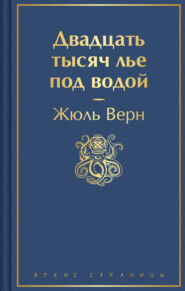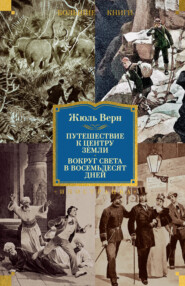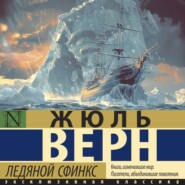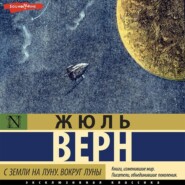По всем вопросам обращайтесь на: info@litportal.ru
(©) 2003-2024.
✖
Celebrated Travels and Travellers, Part 3. The Great Explorers of the Nineteenth Century
Настройки чтения
Размер шрифта
Высота строк
Поля
This time the object was to bring back a flock of Cashmere goats, whose long silk hair is used in the manufacture of the world-famed shawls. In addition, it was proposed to disprove the assertion of the Hindus that the source of the Ganges is beyond the Himalayas, in Lake Manasarowar. A difficult and perilous task! It was first of all necessary to penetrate into Nepaul, whilst the government of that country made such an attempt very difficult, and thence to enter a region from which the natives of Nepaul are excluded, and with still greater reason the English.
The explorers disguised themselves as Hindu pilgrims. Their suite consisted of twenty-five persons, one of whom pledged himself to walk in strides of four feet! This was certainly a rough method of ascertaining the distance traversed!
Messrs. Moorcroft and Hearsay passed through Bareilly, and followed Webb's route as far as Djosimath, which place they left on the 26th of May, 1812. They soon had to cross the last chain of the Himalayas, with increasing difficulties, owing to the rarity of the villages, which caused a scarcity of provisions and service, and the bad roads, at so great a height above the level of the sea.
Nevertheless they saw Daba, where there is an important lamasery, Gortope, Maisar; and, a quarter of a mile from Tirthapuri, curious hot springs.
The original narrative, which appeared in the "Annales des Voyages," speaks of this water as flowing from two openings six inches in diameter in a calcareous plain some three miles in extent, and which is raised in almost every direction from ten to twelve feet above the surrounding country. It is formed of the earthy deposits left by the water in cooling. The water rises four inches above the level of the plain. It is clear, and so warm that one cannot keep a hand in it longer than a few minutes. It is surrounded by a thick cloud of smoke. The water, flowing over a horizontal surface, hollows out basins of various shapes, which as they receive the earthy deposits contract again. When they are filled up, the flow of the water again hollows out a new reservoir, which in its turn becomes full. Flowing thus from one to the other, it finally reaches the plain below. The deposit left by the water is as white as the purest stucco close to the opening, a little further it becomes pale yellow, and further still saffron-coloured. At the other spring it is first rose-coloured, and then dark red. These different colours are to be found in the calcareous plain, and are no doubt the work of centuries.
Tirthapuri, the residence of a lama, is of great antiquity, and is a favourite rendezvous for the faithful, as a wall more than 400 feet long and four wide, formed of stones upon which prayers are inscribed, sufficiently testifies.
Upon the 1st of August the travellers left this place, hoping to reach Lake Manasarowar, and leaving on the right Lake Rawan-rhad, which is supposed to be the source of the largest branch of the Sutlej.
Lake Manasarowar lies at the foot of immense sloping prairies, to the south of the gigantic mountains. This is the most venerated of all the sacred places of the Hindus, which is no doubt owing to its distance from Hindustan, the dangers and fatigues of the journey, and the necessity of pilgrims providing themselves with money and provisions. Hindu geographers regard this lake as the source of the Ganges, the Sutlej, and the Kali rivers. Moorcroft had no doubt as to the error of this assertion as regards the Ganges. Desiring to ascertain the truth as to the other rivers, he explored the steep banks of the lake, and found a number of streams which flowed into it, but none flowing out of it. It is possible that before the earthquake which destroyed Srinagar, the lake had an outlet, but Moorcroft found no trace of it. The lake is situated between the Himalayas and the Cailas chain, and is of irregular oblong shape, five leagues long by four wide.
The end of the expedition was attained. Moorcroft and Hearsay returned towards India, passed by Kangri, and saw Rawan-rhad; but Moorcroft was too weak, and could not continue the tour; he regained Tirthapuri and Daba, and suffered a great deal in crossing the ghat which separates Hindustan from Thibet.
The narrative describes the wind which comes from the snow-covered mountains of Bhutan as cold and piercing, and the ascent of the mountain as long and painful, its descent slippery and steep, making precautions necessary. "We suffered greatly," says the writer; "our goats escaped by the negligence of their drivers, and climbed up to the edge of a precipice some hundred feet in height. A mountaineer disturbing them from their perilous position, they began the descent, running down a very steep incline. The hinder ones kicked up the stones, which, falling with violence, threatened to strike the foremost. It was curious to note how cleverly they managed to run, and avoid the falling stones."
Very soon the Gorkhalis, who had hitherto been content to place obstacles in the way of the travellers, approached them with intent to stop them. For some time the firmness displayed by the English kept them at bay; but at last, gaining courage from their numbers, they began an attack.
"Twenty men," says Moorcroft, "threw themselves upon me. One seized me by my neck, and, pressing his knees against me, tried to strangle me by tightening my cravat; another passed a cord round my legs and pulled me from behind. I was on the point of fainting. My gun, upon which I was leaning, escaped my hold; I fell; they dragged me up by my feet until I was nearly garotted. When at last I rose, nothing could exceed the expression of fierce delight on the faces of my conquerors. Fearing that I should attempt to escape, two soldiers held me by a rope and gave me a blow from time to time, no doubt to remind me of my position. Mr. Hearsay had not supposed that he should be attacked so soon; he was rinsing out his mouth when the hubbub began, and did not hear my cries for help. Our men could not find the few arms we possessed; some escaped, I know not how; the others were seized, amongst them Mr. Hearsay. He was not bound as I was; they contented themselves with holding his arms."
The chief of this band of savages informed the two Englishmen that they had been recognized, and were arrested for having travelled in the country in the disguise of Hindu pilgrims. A fakir, whom Moorcroft had engaged as a goat-herd, succeeded in escaping, and took two letters to the English authorities. Aid was sent, and on the 1st of November the prisoners were released. Not only were excuses offered for their treatment, but what had been taken from them was returned, and the Rajah of Nepaul gave them permission to leave his dominions. All's well that ends well!
To complete our sketch, we must give an account of Mr. Fraser's expedition to the Himalayas, and Hodgson's exploration to the source of the Ganges, in 1817.
Captain Webb, as we have seen, had traced the course of that river past the valley of Dhoun, to Cadjani, near Reital. Leaving this spot upon the 28th of May, 1817, Captain Hodgson reached the source of the Ganges in three days, and proceeded to Gangautri. He found that the river issues from a low arch in the midst of an enormous mass of frozen snow, more than 300 feet high. The stream was already of considerable size, being no less than twenty-seven feet wide and eighteen inches deep. In all probability the Ganges first emerged into the light at this spot.
Captain Hodgson wished to solve various questions; for example: – What was the length of the river under the frozen snow? Is it the product of the melting of these snows? or did it spring from the ground? But, wishing to explore further upwards than his guides advised, the traveller sank into the snow up to his neck, and had to retrace his steps with great difficulty. The spot from which the Ganges issues is situated 12,914 feet above the level of the sea, in the Himalayas.
Hodgson also explored the source of the Jumna. At Djemautri the mass of snow from which the river makes its escape is no less than 180 feet wide and more than forty feet deep, between two perpendicular walls of granite. This source is situated on the south-east slope of the Himalayas.
The extension of the British power in India was necessarily attended by considerable danger. The various native States, many of which could boast of a glorious past, had only yielded in obedience to the well-known political principle "divide and govern," ascribed to Machiavelli. But the day might come when they would merge their rivalries and enmities, to make common cause against the invader.
This was anything but a cheering prospect for the Company, whose policy it was to maintain the system that had hitherto worked so well. Certain neighbouring States, still powerful enough to regard the growth of the British power with jealousy, might serve as harbours of refuge to the discontented, and become the centres of dangerous intrigues. Of all these neighbouring States that which demanded the strictest surveillance was Persia, not only on account of its contiguity to Russia, but because Napoleon was known to have designs in connexion with it which nothing but his European wars prevented him from putting into execution.
In February, 1807, General Gardane, who had gained his promotion in the wars of the Republic, and had distinguished himself at Austerlitz, Jena, and Eylau, was appointed Minister Plenipotentiary to Persia, with instructions to ally himself with Shah Feth-Ali against England and Russia. The selection was fortunate, for the grandfather of General Gardane had held a similar post at the court of the shah. Gardane crossed Hungary, and reached Constantinople and Asia Minor; but when he entered Persia, Abbas Mirza had succeeded his father Feth-Ali.
The new shah received the French ambassador with respect, loaded him with presents, and granted certain privileges to Catholics and French merchants. These were, however, the only results of the mission, which was thwarted by the English General Malcolm, whose influence was then paramount; and Gardane, disheartened by finding all his efforts frustrated, and recognizing that success was hopeless, returned to France the following year.
His brother Ange de Gardane, who had acted as his secretary, published a brief narrative of the journey, containing several curious details respecting the antiquities of Persia, which have been, however, largely supplemented by works brought out by Englishmen.
The French Consul, Adrien Dupré, attached to Gardane's mission, also published a work, under the title of "Voyage en Perse, fait dans les années 1807 à 1809, en traversant l'Anatolie, la Mésopotamie, depuis Constantinople jusqu'à l'extremité du golfe Persique et de là à Irwan, suivi de détails sur les moeurs, les usages et le commerce des Persans, sur la cour de Téhéran et d'une notice des tribus de la Perse." The book bears out the assertions of its title, and is a valuable contribution to the geography and ethnography of Persia.
The English, who made a much longer stay in the country than the French, were better able to collect the abundant materials at hand, and to make a judicious selection from them.
Two works were long held to be the chief authorities on the subject. One of these was by James Morier, who availed himself of the leisure he enjoyed as secretary to the embassy to acquaint himself with every detail of Persian manners, and on his return to England published several Oriental romances, which obtained a signal success, owing to the variety and novelty of the scenes described, and the fidelity to nature of every feature, however minute.
The second of the two volumes alluded to above was the large quarto work by John Macdonald Kinneir, on the geography of Persia. This book, which made its mark, and left far behind it everything previously published on the subject, not only gives, as its title implies, very valuable information on the boundaries of the country, its mountains, rivers, and climate, but also contains interesting and trustworthy details respecting its government, constitution, army, commerce, animal, vegetable, and mineral productions, population, and revenue.
After giving an exhaustive and brilliant picture of the material and moral resources of the Persian Empire, Kinneir goes on to describe its different provinces, quoting from the mass of valuable documents accumulated by himself, thus making his work the most complete and impartial yet issued.
Kinneir passed the years 1808 to 1814 in travelling about Asia Minor, Armenia, and Kurdistan; and the different posts held by him during that period were such as to give him exceptional opportunities for making observations and comparing their results. In his several capacities as captain in the service of the Company, political agent to the Nawab of the Carnatic, or private traveller, his critical acumen was never at fault; and his wide knowledge of Oriental character and Oriental manners, enabled him to recognize the true significance of many an event and many a revolution which would have escaped the notice of less experienced observers.
At the same time, William Price, also a captain in the East India Company's service, who had been attached as interpreter and secretary to Sir William Gore Ouseley's embassy to Persia in 1810, devoted himself to the study of the cuneiform character. Many had previously attempted to decipher it, with results as various as they were ridiculous; and, like those of his predecessors and contemporaries, Price's opinions were mere guess-work; but he succeeded in interesting a certain class of students in this obscure branch of research, and may be said to have perpetuated the theories of Niebuhr and other Orientalists.
To Price we owe an account of the journey of the English embassy to the Persian court, after which he published two essays on the antiquities of Persepolis and Babylon.
Mr. Ouseley, who had accompanied his brother Sir William as secretary, availed himself of his sojourn at the Court of Teheran to study Persian. His works do not, however, bear upon geography or political economy, but treat only of inscriptions, coins, manuscripts, and literature – in a word, of everything connected with the intellectual and material history of the country. To him we owe an edition of Firdusi, and many other volumes, which came out at just the right time to supplement the knowledge already acquired of the country of the Shah.
Another semi-Asiatic semi-European country was also now becoming known. This was the mountainous district of the Caucasus. As early as the second half of the eighteenth century, John Anthony Guldenstædt, a Russian doctor, had visited Astrakhan, and Kisliar on the Terek, at the most remote boundary of the Russian possessions, entered Georgia, where the Czar Heraclius received him with great respect, and penetrated to Tiflis and the country of the Truchmenes, finally arriving at Imeritia. The next year, 1773, he visited the great Kabardia, the Oriental Kumania, examined the ruins of Madjary, visited Tscherkask and Asov, discovered the mouth of the Don, and was about to extend his researches to the Crimea when he was recalled to St. Petersburg.
Guldenstædt's travels have not been translated into French. Their author's career was cut short by death before he had completed their revision for the press, and they were edited at St. Petersburg by Henry Julius von Klaproth, a young Prussian, who afterwards explored the same countries.
Klaproth, who was born at Berlin on the 11th October, 1783, gave proof at a very early age of a special aptitude for the study of Oriental languages. At fifteen years old he taught himself Chinese; and he had scarcely finished his studies at the Universities of Halle and Dresden, when he began the publication of his "Asiatic Magazine." Invited to Russia by Count Potoki, he was at once named Professor of Oriental Languages at the Academy of St. Petersburg.
Klaproth did not belong to the worthy race of book-worms who shut themselves up in their own studies. He took a wider view of the nature of true knowledge, feeling that the surest way to attain a thorough acquaintance with the languages of Asia and of Oriental manners and customs was to study them on the spot. He therefore asked permission to accompany the ambassador Golowkin, who was going to China overland; and the necessary credentials obtained, he started alone for Siberia, making acquaintance with the Samoyèdes, the Tongouses, Bashkirs, Yakontes, Kirghizes, and other of the Finnic and Tartar hordes which frequent these vast steppes, finally arriving at Yakutsk, where he was soon joined by Golowkin. After a halt at Kiakta, the embassy crossed the Chinese frontier on the 1st January, 1806.
The Viceroy of Mongolia, however, insisted upon the observance by the ambassador of certain ceremonies which were considered by the latter degrading to his dignity; and neither being disposed to yield, Golowkin set out with his suite to return to St. Petersburg. Klaproth, not caring to retrace his steps, preferred to visit hordes still unknown to him, and he therefore crossed the southern districts of Siberia, and collected during a journey extending over twenty months, a large number of Chinese, Mandchoorian, Thibetan, and Mongolian books, which were of service to him in his great work "Asia Polyglotta."
On his return to St. Petersburg he was invested with all the honours of the Academy; and a little later, at the suggestion of Count Potoki, he was appointed to the command of an historical, archæological, and geographical expedition to the Caucasus. Klaproth now passed a whole year in journeys, often full of peril, amongst thievish tribes, through rugged districts, and penetrated to the country traversed by Guldenstædt at the end of the previous century.
Klaproth's description of Tiflis is curious as compared with that of contemporary authors. "Tiflis," he says, "so called on account of its mineral springs, is divided into three parts: Tiflis properly so called, or the ancient town; Kala, or the citadel; and the suburb of Issni. This town is built on the Kur, and the greater part of its outer walls is now in ruins. Its streets are so narrow, that 'arbas,' as the lofty carriages so characteristic of Oriental places are called, could only pass with difficulty down the widest, whilst in the others a horseman would barely find room to ride. The houses, badly built of flints and bricks cemented with mud, never last longer than about fifteen years." In Klaproth's time Tiflis boasted of two markets, but everything was extremely dear, shawls and silk scarves manufactured in the neighbouring Asiatic countries bringing higher prices than in St. Petersburg.
Tiflis must not be dismissed without a few words concerning its hot springs. Klaproth tells us that the famous hot baths were formerly magnificent, but they are falling into ruins, although some few remain; the floors of which are cased in marble. The waters contain very little sulphur and are most salutary in their effects. The natives, especially the women, use them to excess, the latter remaining in them several days, and even taking their meals in the bath.
The chief food of the people of Tiflis, at least in the mountainous districts, is the bhouri, a kind of hard bread with a very disagreeable taste, prepared in a way repugnant to our sybarite notions.
When the dough is sufficiently kneaded a bright clear fire of dry wood is made, in earthen vessels four feet high by two wide, which are sunk in the ground. When the fire is burning fiercely, the Georgians shake into it the vermin by which their shirts and red-silk breeches are infested. Not until this ceremony has been performed do they throw the dough, which is divided into pieces of the size of two clenched fists, into the pots. The dough once in, the vessels are covered with lids, over which rags are placed, to make sure of all the heat being kept in and the bread being thoroughly baked. It is, however, always badly done, and very difficult of digestion.
Having thus assisted at the preparation of the food of the poor mountaineer, let us join Klaproth at the table of a prince. A long striped cloth, about a yard and a half wide and very dirty, was spread for his party; on this was placed for each guest an oval-shaped wheaten cake, three spans long by two wide, and scarcely as thick as a finger. A number of little brass bowls, filled with mutton and boiled rice, roast fowls, and cheese cut in slices, were then brought in. As it was a fast day, smoked salmon with uncooked green vegetables was served to the prince and his subjects. Spoons, forks, and knives are unknown in Georgia; soup is eaten from the bowl, meat is taken in the hands, and torn with the fingers into pieces the size of a mouthful. To throw a tid-bit to another guest is a mark of great friendship. The repast over, grapes and dried fruits are eaten. During the meal a good red native wine, called traktir by the Tartars, and ghwino by the Georgians, is very freely circulated. It is drunk from flat silver bowls greatly resembling saucers.
Klaproth's account of the different incidents of his journey is no less interesting and vivid than this description of the manners of the people. Take, for instance, what he says of his trip to the sources of the Terek, the site of which had been pretty accurately indicated by Guldenstædt, although he had not visited them.
"I left the village of Utzfars-Kan on the 17th March, on a bright but cold morning. Fifteen Ossetes accompanied me. After half an hour's march, we began to climb the steep and rugged ascent leading to the junction of the Utzfars-Don with the Terek. This was succeeded by a still worse road, running for a league alongside of the river, which is scarcely ten paces wide here, although it was then swollen by the melting of the snow. This part of the river banks is inhabited. We continued to ascend, and reached the foot of the Khoki, also called Istir-Khoki, finally arriving at a spot where an accumulation of large stones in the bed of the river rendered it possible to cross over to the village of Tsiwratté-Kan, where we breakfasted. Here the small streams forming the Terek meet. I was so glad to have reached the end of my journey, that I poured a glass of Hungarian wine into the river, and made a second libation to the genius of the mountain in which the Terek rises. The Ossetes, who thought I was performing a religious ceremony, observed me gravely. On the smooth sides of an enormous block of schist I engraved in red the date of my journey, together with my name and those of my companions, after which I climbed up to the village of Ressi."
After this account of his journey, from which we might multiply extracts, Klaproth sums up all the information he has collected on the tribes of the Caucasus, dwelling specially on the marked resemblances which exist between the different Georgian dialects and those of the Finns and Lapps. This was a new and useful suggestion.
Speaking of the Lesghians, who occupy the eastern Caucasus, known as Daghestan, or Lezghistan, Klaproth says their name is a misnomer, just as Scythian or Tartar was used to indicate the natives of Northern Asia; adding, that they do not form one nation, as is proved by the number of dialects in use, which, however, would seem to have been derived from a common source, though time has greatly modified them. This is a contradiction in terms, implying either that the Lesghians, speaking one language, form one nation, or that forming one nation the Lesghians speak various dialects derived from the same source.
According to Klaproth, Lesghian words have a considerable affinity with the other languages of the Caucasus, and with those of Western Asia, especially the dialects of the Samoyedes and Siberian Finns.
West and north-west of the Lesghians dwell the Metzdjeghis, or Tchetchentses, who are probably the most ancient inhabitants of the Caucasus. This is not, however, the opinion of Pallas, who looks upon them as a separate tribe of the Alain family. The Tchetchentse language greatly resembles the Samoyede and other Siberian dialects, as well as those of the Slavs.
The Tcherkesses, or Circassians, are the Sykhes of the Greeks. They formerly inhabited the eastern Caucasus and the Crimea. Their language differs much from other Caucasian idioms, although the Tcherkesses proceed, with the Wogouls and the Ostiakes – we have just seen that the Lesghian and Tchetchentse dialects resemble the Siberian – from one common stock, which at some remote date separated into several branches, of which the Huns probably formed one. The Tcherkesse dialect is one of the most difficult to pronounce, some of the consonants being produced in a manner so loud and guttural that no European has yet been able to acquire it.
In the Caucasus also dwell the Abazes – who have never left the shores of the Black Sea, where they have been settled from time immemorial – and the Ossetes, or As, who belong to the Indo-Germanic stock. They call their country Ironistan, and themselves the Irons. Klaproth takes them to be Sarmatic Medes, not only on account of their name, which resembles Iran, but because of the structure of their language, which proves more satisfactorily than historical documents, and in a most conclusive manner, that they spring from the same stock as the Medes and Persians. This opinion, however, appears to us mere conjecture, as in the time of Klaproth the interpretation of cuneiform inscriptions had not been accomplished, and too little was known of the language of the Medes for any one to judge of its resemblance to the Ossete idiom.

















